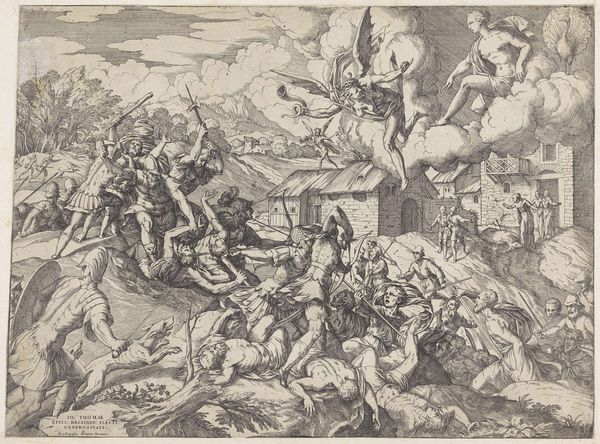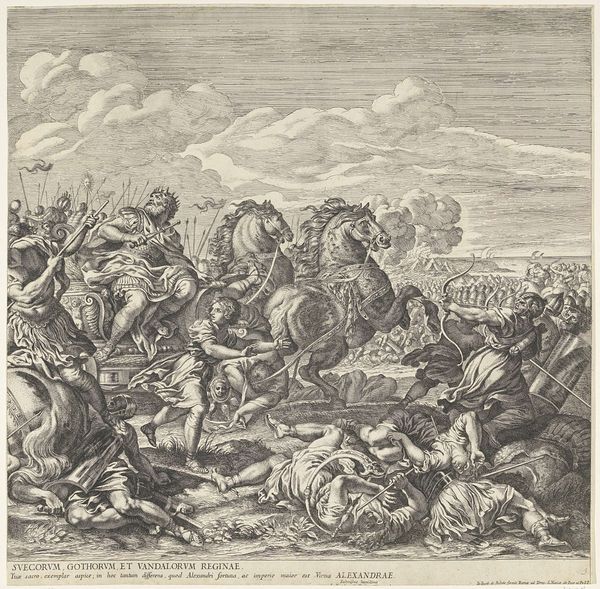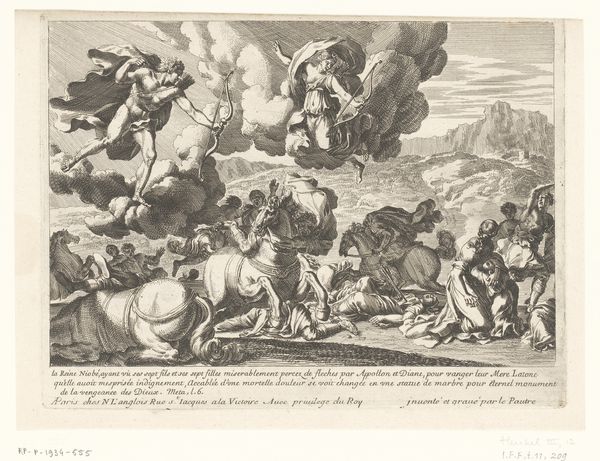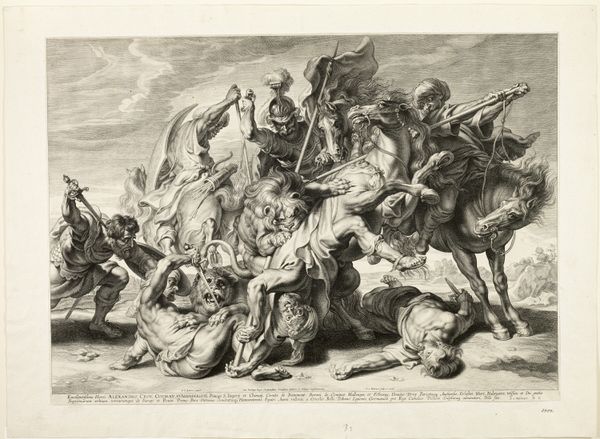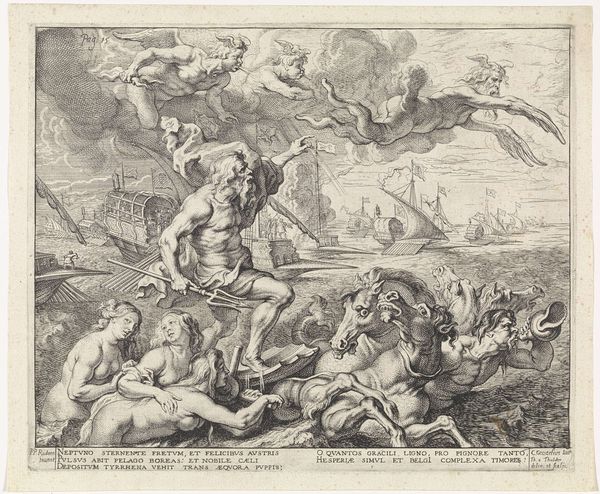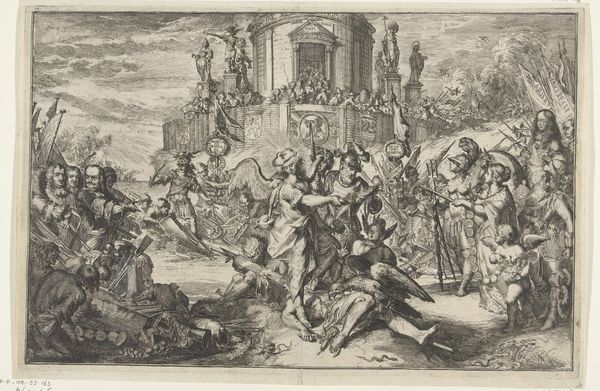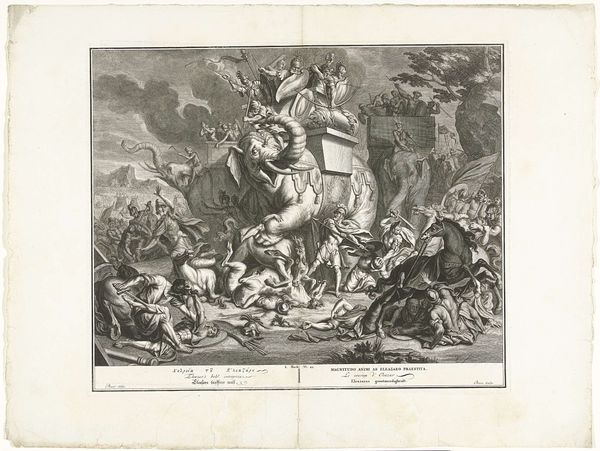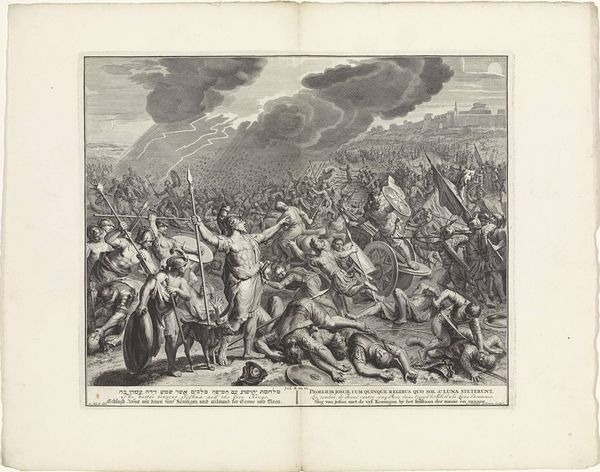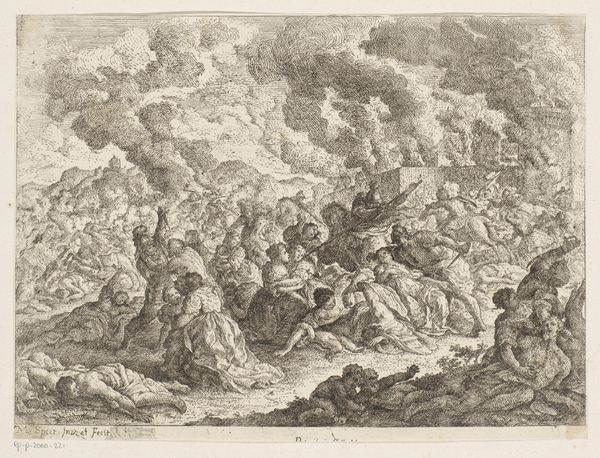
engraving
#
baroque
#
landscape
#
figuration
#
history-painting
#
engraving
Dimensions: height 443 mm, width 467 mm
Copyright: Rijks Museum: Open Domain
Curator: This engraving, titled "Slag bij Arbella (linker deel)," or "Battle of Arbella (left part)," created by Pietro Aquila between 1660 and 1692, presents a dense, historical scene. Editor: Chaotic! The initial impression is overwhelming—a storm of figures, limbs, and weaponry all rendered in stark monochrome. There's a deliberate imbalance in its composition, perhaps intended to create that sense of drama. Curator: Yes, the baroque aesthetic embraces dynamism. Notice how Aquila manipulates light and shadow to guide the viewer’s eye. The linear precision typical of engravings offers tremendous detail, especially considering the density of forms in the overall composition. Editor: Consider the symbolism: this isn’t just a brawl; it’s a clash of civilizations. The artist clearly wants us to see the human cost of power—armor dented, faces contorted in agony. And note the eagle soaring above the fray, a potent symbol of Roman military might adapted across empires. Its presence feels almost like a commentary on ambition and conquest. Curator: I'm drawn to how the chaotic entanglement of figures and weapons resolves itself. Observe how diagonal lines pull the eye through the image. The contrast of tightly packed foreground and relatively sparse sky creates depth, an element particularly prominent in baroque landscapes. The light falling on the bodies almost turns them into sculptural forms. Editor: Looking closer, there’s a real theatricality, reminiscent of Baroque stage design, to the use of layered symbolism. The angel bearing the insignia feels rather staged, almost a pronouncement about whose "side" Heaven favors. How do you interpret the absence of vibrant color impacting our reception of violence depicted? Curator: That limitation focuses the reading precisely onto form. The lines of action, the anatomical rendering—all emerge into relief absent any color. Editor: Precisely, devoid of color, we must actively search for narrative. Thank you for calling my attention back to its careful use of light, balance, and structure to reveal a profound historical struggle.
Comments
No comments
Be the first to comment and join the conversation on the ultimate creative platform.

